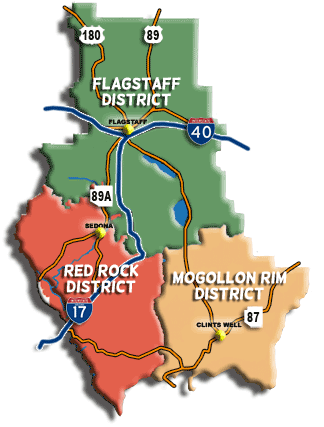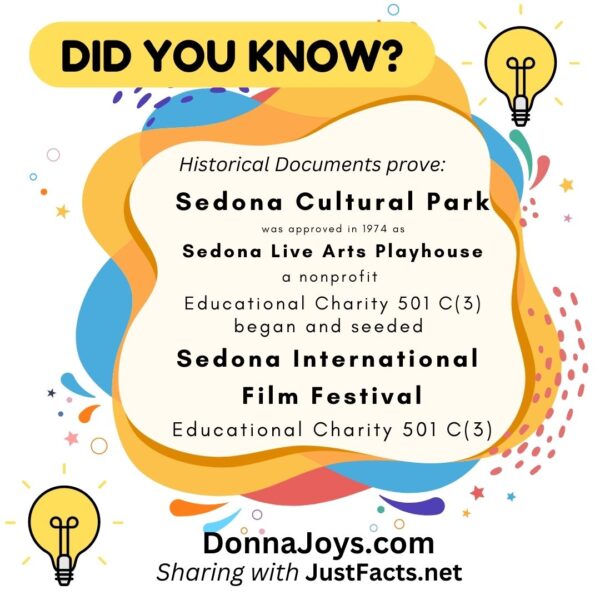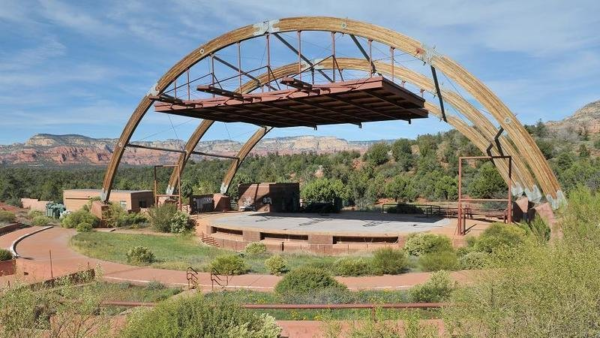The beginning, Sedona Cultural Park Forest land. The land in which the Sedona Cultural Park sits was Coconino National Forest before the Forest land exchange.


The land was National Forest with a wealth of heritage and cultural background. According to Bureau of Land Management records the land history is documented as far back as the mid 1800’s reflect Indian reservation usage. Palatki and Honanki Heritage Sites visible in the distance. Hiking in the Sedona area has cultural sites throughout the area.
According to the Forest Service dated September 7, 2021 “Cultural/Heritage information (archaeological information) isn’t releasable under the Freedom of Information Act, as it is sensitive information… those reports cannot be released to you.”
How did this portion of the National Forest become part of a Land Trade with the USDA Forest Service and Sedona Cultural Park?
This federal land exchange took years. The land exchange wouldn’t have happened if it didn’t provide a community benefit. Up to 1993 the land known as the Sedona Cultural Park was designated as “Open Space Preservation/Conservation” on the Sedona Community Plan Land Use map.
No land trade could occur without a zoning change from “Preservation / Conservation” to “Public/Semi-public” for the benefit of the community of Sedona and the Sedona Cultural Park.
According to the environmental assessment, the proposed Sedona Cultural Park Land Exchange location fits the community criteria. Was footprinted inside the city limits and had the guidance contained in the City of Sedona Community Plan.
According to the land exchange documents The adverse effects are primarily related to the Cultural Park development BUT are lessened by the LOCAL regulations and are agreed to mitigation measures.
The Sedona Cultural Park Board
July 25, 1995 the Sedona Cultural Park Board negotiated an agreement “Sedona Cultural Park Contract with Sedona.
BACKGROUND
The Cultural Park property was originally designated as ” Open Space Preservation!
Conservation” on the Community Plan Land Use Map when the Plan was first adopted in
November 1991 ( the Cultural Park property was National Forest at the time). The property had
been zoned R1L- 70 by Yavapai County and later RS- 70 by the City (single- family very low
density residential).
In February 1993 the Community Plan Land Use Map was amended in a 5 to 1 vote to
Public/Semi-public” for the Sedona Cultural Park, specifically to accommodate community
cultural facility needs. This designation allowed the applicant to pursue a zone change for the
Cultural Park. For this amendment request, the applicant’s letter of intent asserted that the
proposed use of the property would be exclusively oriented towards area arts and cultural groups
and that the public use of the site would preclude private commercial utilization to the benefit of
the community. At the time, the Sedona Community Plan supported USFS land trades only for
public/semi-public uses, parks or open space purposes. Following the Community Plan
amendment, a land trade was subsequently completed through the USFS for the Cultural Park.
In July 1995 the property was rezoned from RS- 70 to PD (Planned Development) to
accommodate the proposed public/semi-public uses at the Cultural Park.
Staff Report – CPA2006- 02
Planning and Zoning Commission
Sept 19, 2006
09-19-06(R) Raber Background City SCPDownload
BACKGROUND
“The Cultural Park property was originally designated as ” Open Space Preservation!
Conservation” on the Community Plan Land Use Map when the Plan was first adopted in
November 1991 ( the Cultural Park property was National Forest at the time). The property had
been zoned R1L- 70 by Yavapai County and later RS- 70 by the City (single-family very low-density residential).
In February 1993 the Community Plan Land Use Map was amended in a 5 to 1 vote to
Public/Semi-public” for the Sedona Cultural Park, specifically to accommodate community
cultural facility needs. This designation allowed the applicant to pursue a zone change for the
Cultural Park. For this amendment request, the applicant’s letter of intent asserted that the
proposed use of the property would be exclusively oriented towards area arts and cultural groups
and that the public use of the site would preclude private commercial utilization to the benefit of
the community. At the time, the Sedona Community Plan supported USFS land trades only for
public/semi-public uses, parks, or open space purposes. Following the Community Plan
amendment, a land trade was subsequently completed through the USFS for the Cultural Park.
In July 1995 the property was rezoned from RS- 70 to PD (Planned Development) to
accommodate the proposed public/semi-public uses at the Cultural Park. The First Phase of the
project was to include:
Staff Report – CPA2006- 02
Planning and Zoning Commission
Sept 19, 2006
Outdoor amphitheater ( 5530 seats)
Festival grounds ( maximum capacity of2500 people)
Vehicular access and parking areas
Related facilities and infrastructure
Subsequent phases of the project include:
Arts Village ( 100, 000 square feet), including visitor center, museum, ISO- seat small
outdoor amphitheater and administrative and park offices as primary uses)
Uses accessory to the Arts Village, including:
Cafes
Arts/ Educational Facilities
USFS Interpretive Center
Multi- Use facilities
Studios/ Galleries
Elderhostel ( up to 30 units)
Performance areas
Future Performing Arts Facility (1000- 1500 seats)
Future Exhibition Building
In addition, 15 acres ( 29%) of the site was to be preserved in a natural condition and there was
also a reference to potential park and ride for future shuttle utilizing the planned parking areas.
A total of 925 auto and 8 bus on-site parking spaces were also approved to accommodate all of
the Park’ s uses. Additional vehicles may be accommodated on-site using event-style parking
with additional arrangements for off-site parking for major events.
These uses were consistent with the Public/Semi-public use designation in the Community Plan
which also supported the development of a multi-purpose community or regional arts complex
that could be integrated with other community facilities. This designation is currently in place
on the property. In May 1996, the rezoning was upheld by the community through a referendum
election. Additional zoning conditions were approved in February 1997 and again modified in
2002.
Although funding for the Park has come from many sources, in fiscal year 1995- 96, the City
received $ 630, 800 in matching funds ( Heritage Fund) through Arizona State Parks to assist the
Park in development of the amphitheater, restrooms, roads, parking, trails and related facilities
and infrastructure.
In 1997 and in 2001, the Park sold approximately 6 acres of land to Yavapai College. About one
acre in the proposed ” Arts Village” area is currently developed with College facilities.
Approximately 5 acres in the northern portion of the original master plan is undeveloped.
In 2003, The Sedona Cultural Park filed a Community Plan amendment request to include a 150-
unit hotel and commercial uses at the site. The City Council denied the request.
Also in late 2003, the Cultural Park closed due to financial difficulties. In May 2004, Sathcupa
acquired the property
Sedona Fact Finds: Sedona Cultural Park & SIFF
What does the Sedona Cultural Park & Sedona International Film Festival have in common? Research and historical documents show us that the Sedona Cultural Park was approved in 1974 as Sedona Live Arts Playhouse as a nonprofit Educational Charity 501 C(3). Sedona Live Arts Playhouse Articles of Incorporation formation for educational, charitable, scientific, philanthropic, and…
Continue Reading Sedona Fact Finds: Sedona Cultural Park & SIFF
Sedona Cultural Park Inc. Background
Sometimes things get lost in time and the story changes. After years of hearing many different stories, I deeply studied the historical data-driven documents on the Sedona Cultural Park. One level leads the path to another level of source documentation to tell the story. While I did have a collection of records I had collected…


